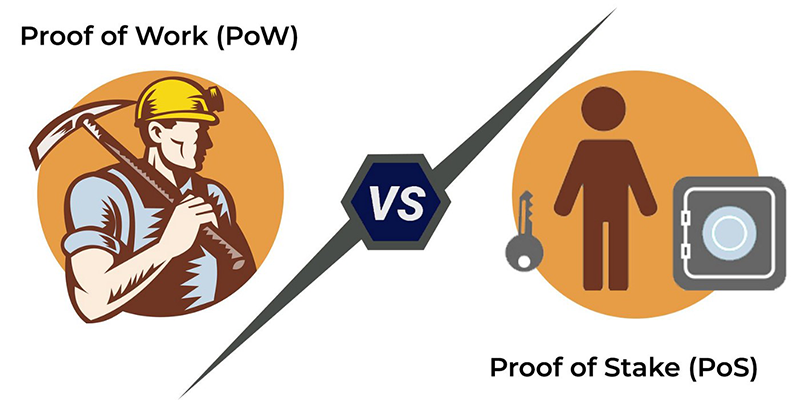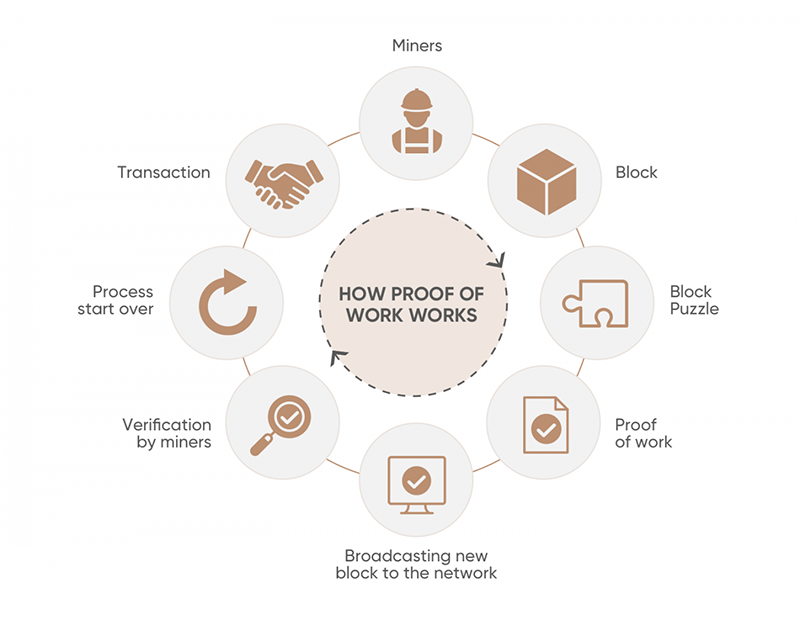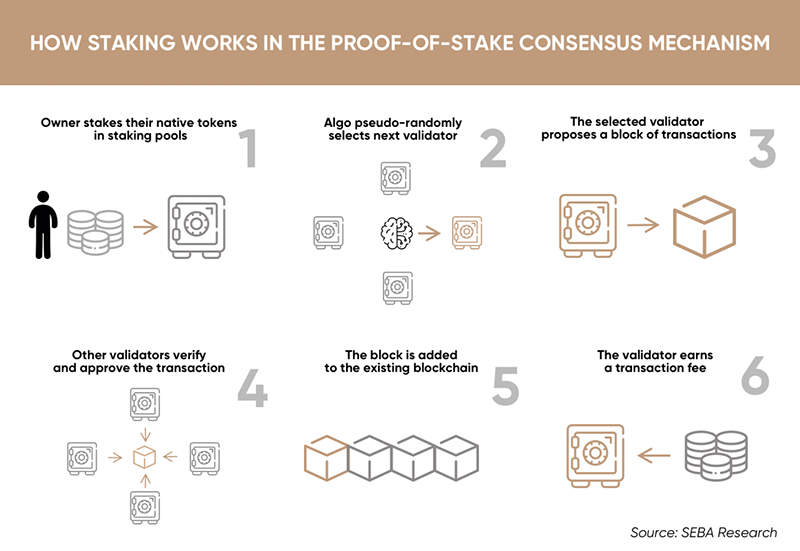
The Dollar Wrecking Ball: Why is a strong US dollar so dangerous?
The rising US dollar strength is starting to produce cracks across economies and markets.
Cryptocurrencies gained popularity, trustworthiness, and their religiously loyal fandom due to the incentives underlying their consensus mechanisms. These algorithms are the cornerstone of any cryptocurrency, facilitating transactions, providing security, and aligning incentives between all participants. Most cryptocurrencies use one of two consensus schemes: Proof-of-work (PoW) or Proof-of-stake (PoS). With all the fuss and excitement surrounding the Ethereum transition from PoW to PoS, it would be good to revisit these fundamental concepts. Understanding the foundations will also help you make better investment decisions.

Proof-of-Work
PoW was the first algorithm to be used for a cryptocurrency. The concept itself was first invented in the early 90s. But it was Bitcoin’s developer/s, Satoshi Nakamoto, who modified the concept to make it suitable for the idea of a cryptocurrency. The main success of this method was solving the problem of double-spending:
Double-spending – occurs when the same money is used for two different transactions. This phenomenon is almost exclusively applicable to digital currencies. You cannot hand cash over to the vendor and then use it again. However, with digital money, it is like copying a document. You can create an unlimited number of copies and send them to as many people as you would like.
In the PoW framework, consumers gather their transactions into one block, which needs to be confirmed by the miners in order to be added to the blockchain. The process of confirming a block is costly and computationally demanding for the miner. Thus, there is a reward that comes with securing the block (As of writing, the reward stands at 6.25BTC). The miner, using his hardware, needs to solve a complex mathematical puzzle to secure the block and add it to the chain. Many miners are trying to solve this puzzle at the same time, but only one can find the right solution. The process of searching for the solution takes around 10 minutes. Once a lucky miner finds a solution, other miners (nodes) check its correctness (which can be done easily), confirm the block and add it to the chain.
The process of completing the puzzle is basically a massive guessing game for a computer. Running a multitude of computations is a drain on your energy source and computer power. However, the protocol has a chunky reward ready for you if you manage to solve the puzzle (with the price of BTC = 20,000, the reward is worth 125,000$).

Cryptocurrencies using PoW: Bitcoin, Ethereum (soon transitioning to PoS), Litecoin, Dogecoin, Monero
Proof-of-Stake
PoS consensus mechanism is by far the most popular algorithm used by cryptocurrencies. It was developed in 2011, and post-Ethereum, almost all the blockchains employed PoS as their preferred choice of algorithm. We cannot blame them for shying away from PoW considering all the advantages. We will get to those later.
Similar to PoW, the PoS algorithm tries to reach a blockchain consensus in order to confirm a block of transactions. However, the paths they take to get there are quite different. In the PoS system, the blocks are not “mined” but rather are “forged”. For the blockchain participants to become eligible to forge a block, they must lock up a portion of their token holdings as a stake. The size of their stake determines their chance to become a validator.
Other methods are added to the selection process to avoid having only the wealthiest nodes validating blocks and earning rewards:
Randomized block selection – a node with the lowest hash value and the highest stake is selected as the next validator
Coin age selection – the process combines the number of the tokens staked with the time they have been staked. Once a node has been selected as a validator, its coin age is reset to zero and he will have to wait before he can become a validator again
Protocols created numerous ways in which they modified the original PoS concept to suit their own intentions, goals, and incentives:
Polkadot – Nominated Proof of Stake
Binance – Proof of Staked Authority
Once a node is selected as a validator, they check all the transactions in the block, confirm the block and add it to the blockchain. As an incentive they receive transaction fees included in the block and sometimes also a token reward. The staked amount also serves as collateral for the protocol. If the validator wanted to defraud the blockchain or forge the transactions, their stake would be confiscated. Considering that validators must have large stakes, such a penalty can be considerable.
The PoS algorithm entails several advantages:
• Adaptability – each protocol can modify the mechanism to fit their own desired version of the blockchain
• Scalability – without the need for large and expensive hardware, it is quite easy to add new validators to the protocol
• Decentralization – the protocol has access to a larger network of validators as it is easier for nodes to access the role
• Energy efficiency – without the need to compute extensive puzzles, the necessary computational power is much smaller, thus, being much more energy-efficient
The main potential problem with the PoS mechanism is a so-called 51% attack. Theoretically, an individual could buy more than half of the available token supply and control the network. However, this is generally only a problem with smaller protocols with a smaller market cap.

Cryptocurrencies using PoS: Solana, Avalanche, Polkadot, Binance
PoW vs PoS
Even though PoW is a time-tested, well-established algorithm, which has been working more than sufficiently for Bitcoin, it is quite inefficient in many other areas. PoW projects have scalability issues which lead to problems with transaction times. PoS blockchains are more decentralized; more people can join the network to become a validator. Moreover, they are much more efficient at spending energy. Bitcoin has a cost of transactions a year ranging from 830kW to 130TW, while a cryptocurrency like Tezos, using PoS, spends energy only in a range from 30mW to 60MW, which is a considerable difference. PoS is also much more adaptable, hence able to suit the needs of various blockchains. The adoption of the PoS algorithm by most cryptocurrencies proves that the mechanism has some preferred properties.

Join us right now >>> REGISTRATION
The main drawback of the PoS algorithm lies in its novelty and its security risks. Bitcoin network, and its use of PoW, prides itself in the fact that its blockchain has never been compromised. While the PoW-based blockchains are at risk of the 51% attack, especially the smaller protocols. Many also point to the fact that the wealthy validators in these protocols get blocks handed to them way too often. Only making the rich richer.
Therefore, each project needs to weigh the benefits of both algorithms and decide for themselves which one fits their needs better. Ethereum realized that PoW is no longer suitable for their goals and intentions. Therefore, they decided to set on an onerous path towards switching from PoW to PoS. There were two main reasons behind the decision to switch the algorithms. One was the worryingly increasing centralization of the mining pools. For instance, as of December 2021, the four largest mining pools controlled more than half of Bitcoin’s hash power. People behind Ethereum want to give opportunity to more individuals to participate in the validation process. The other reason is an environmental concern. The energy demands of the network leave a substantial carbon footprint. The switch to PoS is expected to reduce energy consumption by 99.95%!

The structure of the Ethereum network suggests that the transition should be beneficial for the project. We will see what “The Merge” brings along.
Comments
You must be logged in to add a comment.